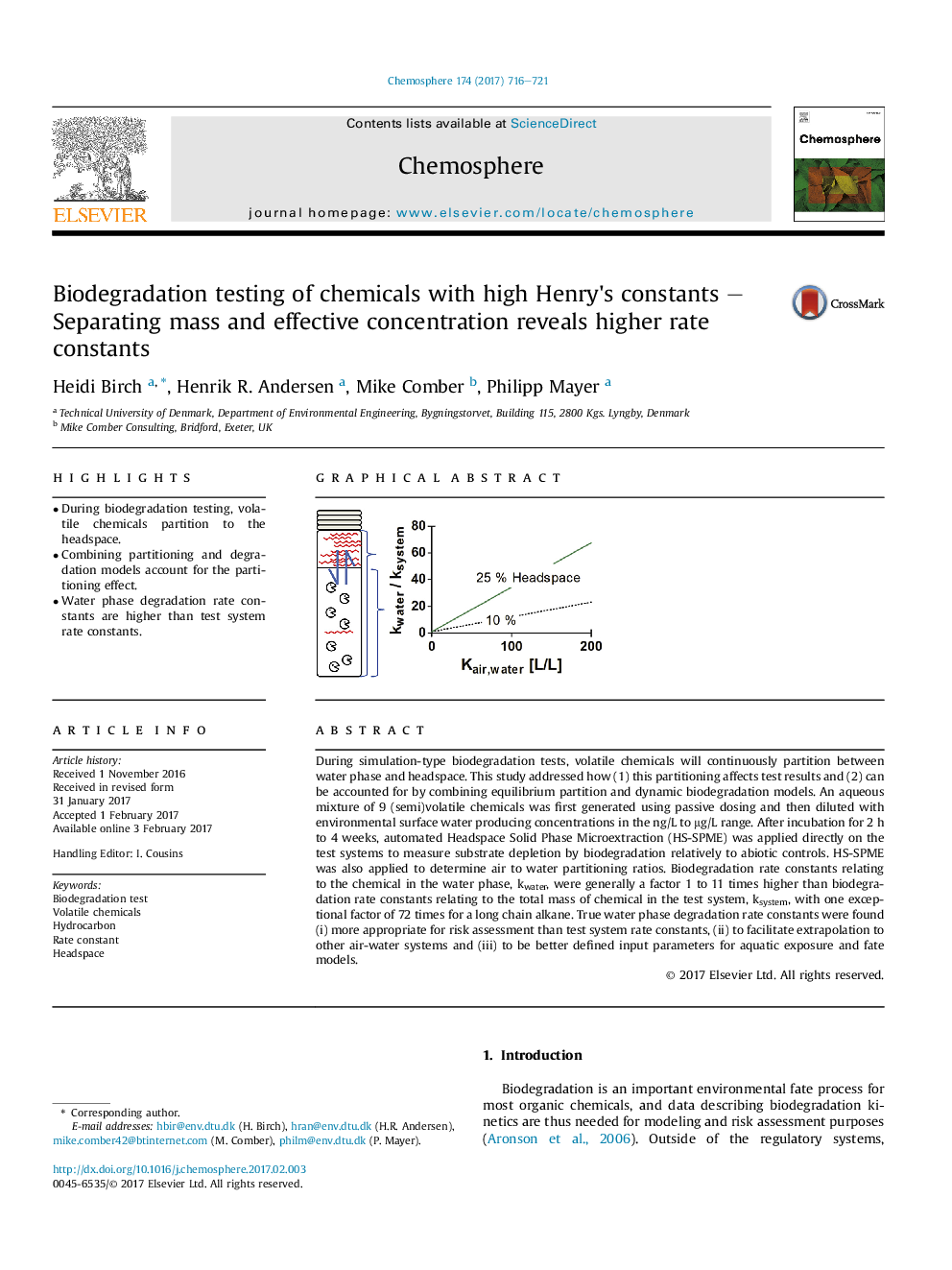| کد مقاله | کد نشریه | سال انتشار | مقاله انگلیسی | نسخه تمام متن |
|---|---|---|---|---|
| 5747314 | 1618797 | 2017 | 6 صفحه PDF | دانلود رایگان |
- During biodegradation testing, volatile chemicals partition to the headspace.
- Combining partitioning and degradation models account for the partitioning effect.
- Water phase degradation rate constants are higher than test system rate constants.
During simulation-type biodegradation tests, volatile chemicals will continuously partition between water phase and headspace. This study addressed how (1) this partitioning affects test results and (2) can be accounted for by combining equilibrium partition and dynamic biodegradation models. An aqueous mixture of 9 (semi)volatile chemicals was first generated using passive dosing and then diluted with environmental surface water producing concentrations in the ng/L to μg/L range. After incubation for 2 h to 4 weeks, automated Headspace Solid Phase Microextraction (HS-SPME) was applied directly on the test systems to measure substrate depletion by biodegradation relatively to abiotic controls. HS-SPME was also applied to determine air to water partitioning ratios. Biodegradation rate constants relating to the chemical in the water phase, kwater, were generally a factor 1 to 11 times higher than biodegradation rate constants relating to the total mass of chemical in the test system, ksystem, with one exceptional factor of 72 times for a long chain alkane. True water phase degradation rate constants were found (i) more appropriate for risk assessment than test system rate constants, (ii) to facilitate extrapolation to other air-water systems and (iii) to be better defined input parameters for aquatic exposure and fate models.
166
Journal: Chemosphere - Volume 174, May 2017, Pages 716-721
